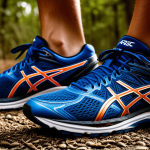Overview of Tai Chi
Embarking on Tai Chi offers an enriching journey into a practice steeped in history and philosophy. Originating as a martial art in China, Tai Chi reflects principles of yin and yang, embodying a harmonious balance. This practice, cherished for centuries, seamlessly fuses mind-body exercise with meditative movements, providing a potent form of elderly fitness.
Historical Context and Philosophy
Tai Chi, deeply rooted in Daoist and Confucian traditions, advocates for serenity through motion. It emerged as a defensive martial art, evolving into a form of gentle exercise focused on improving health and spiritual well-being. Practitioners embrace its philosophy of inner equilibrium and fluid movement, vitalizing both body and mind.
Also to discover : Tailored Stress-Relief Blueprints: Vital Tactics for Thriving College Students
Fundamental Principles
The core principles of Tai Chi emphasize balance, centredness, and alignment. Practitioners focus on controlled breathing, continuous flow of movement, and mindful concentration, promoting a deepened mind-body connection. Each session seeks to cultivate flexibility, precision, and relaxation.
Types of Tai Chi Styles
There are several styles, each unique in their sequence and pace. Among them, the Yang style, characterized by its large, graceful motions, is most prevalent for elderly fitness. Conversely, the Wu style offers compact movements, ideal for small spaces. Irrespective of style, Tai Chi’s essence lies in its adaptability to various fitness levels.
Also read : Knee-Friendly Cardio Routines: The Ultimate Safe & Effective Fitness Guide To Ease Pain
Health Benefits of Tai Chi for Seniors
Tai Chi, often celebrated for its gentle and accessible nature, offers a plethora of health benefits, especially for seniors. Physically, it enhances strength, balance, and flexibility, crucial for maintaining mobility and preventing falls. Regular practice helps seniors develop more robust muscle tone and joint agility, contributing significantly to their fitness.
Beyond the physical, Tai Chi also serves the mind. It is effective in stress reduction and improving cognitive function. By focusing on slow, deliberate movements paired with deep breathing, seniors can lower stress levels and enhance mental clarity. The practice encourages mindfulness, which is beneficial for cognitive health, reducing the risk of disorders such as dementia.
Socially, Tai Chi fosters vibrant connections, offering more than just exercise—it creates a sense of community. Joining classes allows seniors to engage in a shared experience, improving their quality of life through companionship and mutual support. As a holistic practice, Tai Chi for seniors not only elevates physical wellness but also enriches mental and social well-being, underscoring its enduring appeal as a comprehensive solution for elderly fitness and wellness.
Tai Chi Techniques for Seniors
Tai Chi techniques, designed specifically for seniors, prioritize accessible movements that promote senior fitness without overexertion.
Basic Tai Chi Movements
Foundational movements in Tai Chi, such as the “wave hands like clouds” and “brush knee”, are gentle, fluid, and effective for enhancing balance and flexibility. These movements are repeated slowly, ensuring ease of learning and mastering the flow essential for maintaining mobility.
Modifications for Mobility Impairments
Tai Chi can be tailored to accommodate those with limited mobility, making it inclusive for all fitness levels. For individuals with impairments, movements can be performed while seated, reducing strain while still promoting the mind-body connection. Practitioners can benefit from maintaining smooth, continuous motion, even when adaptations are necessary, allowing for consistent elderly fitness.
Breathing Techniques in Tai Chi
Breathing techniques are integral to enhancing Tai Chi practice. Focused, deep breathing synchronizes with movements, fostering relaxation and increased oxygenation. This conscious practice reduces stress and calms the mind. As seniors engage in these breathing exercises, they experience improved emotional balance and heightened physical endurance.
Utilizing these techniques collectively supports a comprehensive approach to senior wellness through Tai Chi.
Research and Statistics on Tai Chi’s Impact
The efficacy of Tai Chi for seniors’ health is strongly supported by research. Studies highlight its impressive benefits across various health aspects. Statistically, regular Tai Chi practice reduces fall risk by approximately 43% in the elderly. This reduction is crucial for maintaining mobility and preventing injuries. Seniors who practice Tai Chi show significant improvements in balance, which is crucial for daily living and independent movement.
Mentally, Tai Chi aids in stress reduction and cognitive health. Research indicates a 25% improvement in cognitive function among seniors practicing Tai Chi compared to those who engage in other activities. The meditative nature of Tai Chi contributes to lower stress levels and enhances mental clarity.
In comparison with other exercises, Tai Chi proves advantageous due to its gentle, accessible nature. Unlike high-impact exercises, Tai Chi can be performed by nearly all fitness levels, making it ideal for seniors. The practice not only contributes to physical health but also supports mental well-being, making it an appealing choice for comprehensive elderly fitness.
These statistics and research findings reiterate the broad-spectrum impact of Tai Chi on senior health, underscoring its value as a preferred fitness regimen.
Testimonials and Success Stories
Listening to success stories from seniors who’ve embraced Tai Chi can illuminate its broad-reaching benefits. Margaret, 72, shares, “My balance and flexibility have improved significantly since starting Tai Chi. It’s both relaxing and invigorating.” Her story reflects the potential for enhanced physical wellness through consistent practice.
Instructors observe transformations too. One teacher, Robert, notes, “The joy on my students’ faces as they improve is remarkable. Tai Chi’s slow, deliberate movements suit every body, regardless of age.” Such insights underscore the efficiency of Tai Chi in fostering mind-body exercise for all.
Case studies often highlight the profound changes in participants. For example, John, a senior with past mobility issues, reports that Tai Chi facilitated his return to activities he’d given up. He says, “I feel in control and more connected to my body now.”
These testimonials and anecdotes illustrate Tai Chi’s multifaceted impact—not just improving elderly fitness, but enriching lives with newfound confidence and community. Through these shared experiences, many find inspiration to begin their own Tai Chi journeys, embarking on a path to better health and wellness.
Safety Considerations for Practicing Tai Chi
Embarking on a Tai Chi journey requires some forethought to ensure a safe and beneficial experience. As with any new exercise regimen, it’s vital to approach Tai Chi with caution to avoid injuries. Here are common safety tips:
- Wear comfortable, non-restrictive clothing to facilitate freedom of movement.
- Begin with warm-up exercises to prepare muscles and joints, reducing strain.
- Hydration is important, so keep water accessible during sessions.
Before starting Tai Chi, consulting with a healthcare provider is recommended, particularly for those with pre-existing conditions. They can offer tailored advice, ensuring that the practice aligns with your wellness goals.
Choosing a safe environment is crucial. An open, flat space free of obstacles minimizes the risk of trips or falls, making sessions more enjoyable and secure.
Tai Chi promotes injury prevention through its low-impact nature. However, listening to your body and recognising limits is key to avoiding overexertion. Rest when necessary, and gradually increase practice intensity to match your comfort level.
By adhering to these considerations, practitioners can enjoy Tai Chi’s many benefits while prioritizing safety.
Finding Tai Chi Classes and Resources
Embarking on the journey of Tai Chi requires access to suitable classes and resources, especially for seniors. Tai Chi classes are available in various formats, catering to diverse preferences and needs.
Online vs. In-person Classes
Choosing between online and in-person classes depends on personal comfort and accessibility. Online platforms offer flexibility and convenience, allowing seniors to practice Tai Chi from home. These classes can be accessed via platforms like YouTube or specialized websites offering guided lessons. In contrast, in-person classes often provide a richer experience with interactive guidance and immediate feedback from instructors, fostering a community atmosphere.
Community Resources and Support
Local community centers frequently offer Tai Chi classes, providing a supportive environment for seniors. These centers often host programs tailored to elderly fitness, focusing on exercises that promote balance and strength. Engaging with local organizations can also help in connecting with fellow practitioners, enhancing social ties.
Recommended Reading and Videos
Several books and videos serve as excellent Tai Chi resources. Reading materials often delve deeper into its philosophy and techniques, while instructional videos provide visual aid for mastering movements. These resources are invaluable for seniors aiming to deepen their understanding and practice of Tai Chi.






